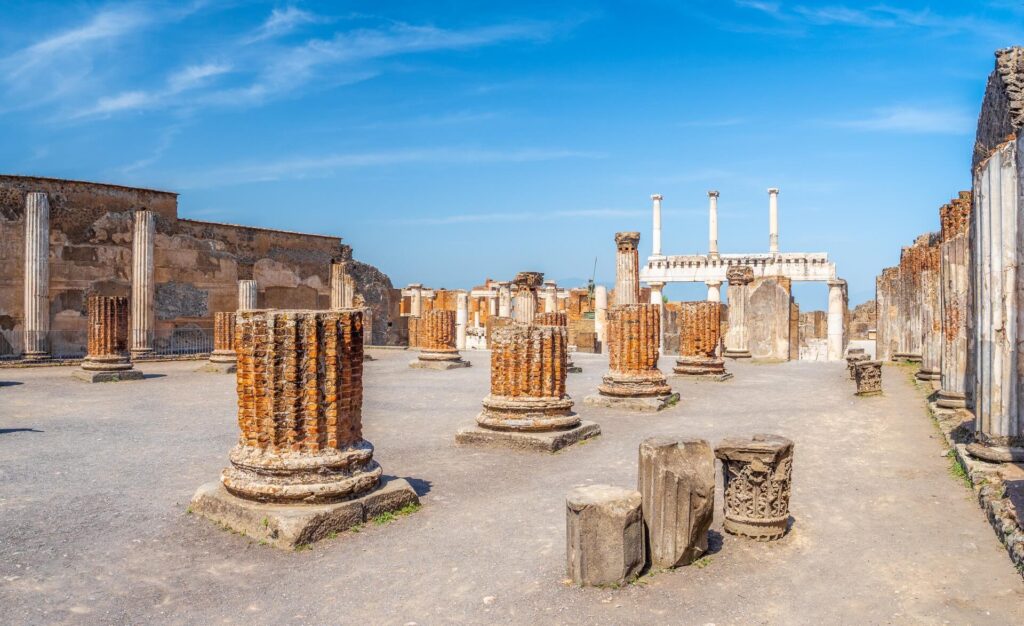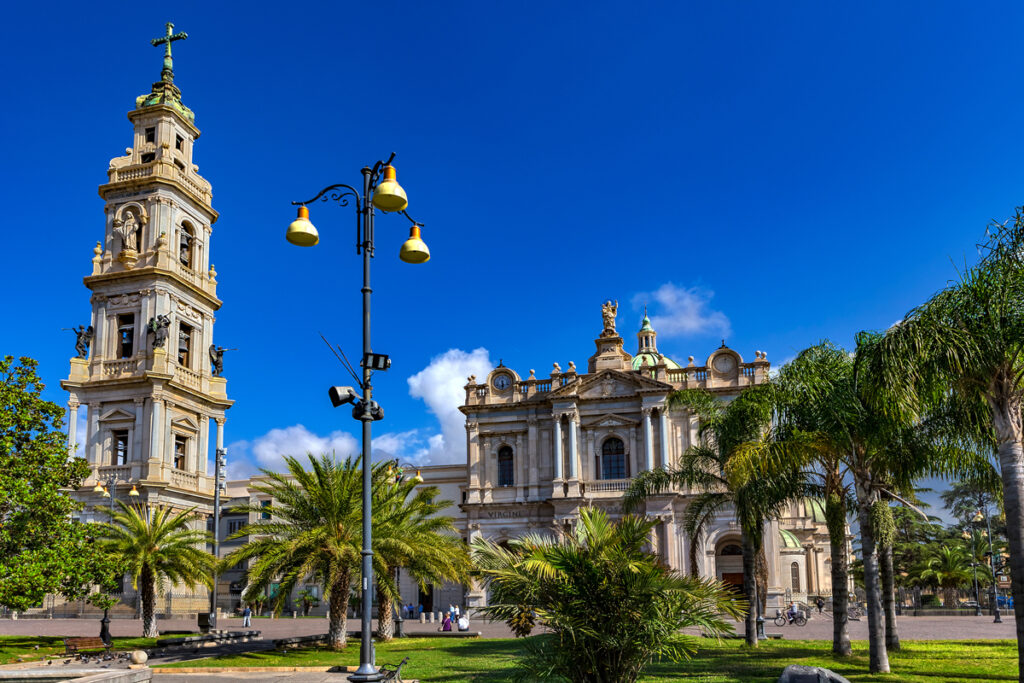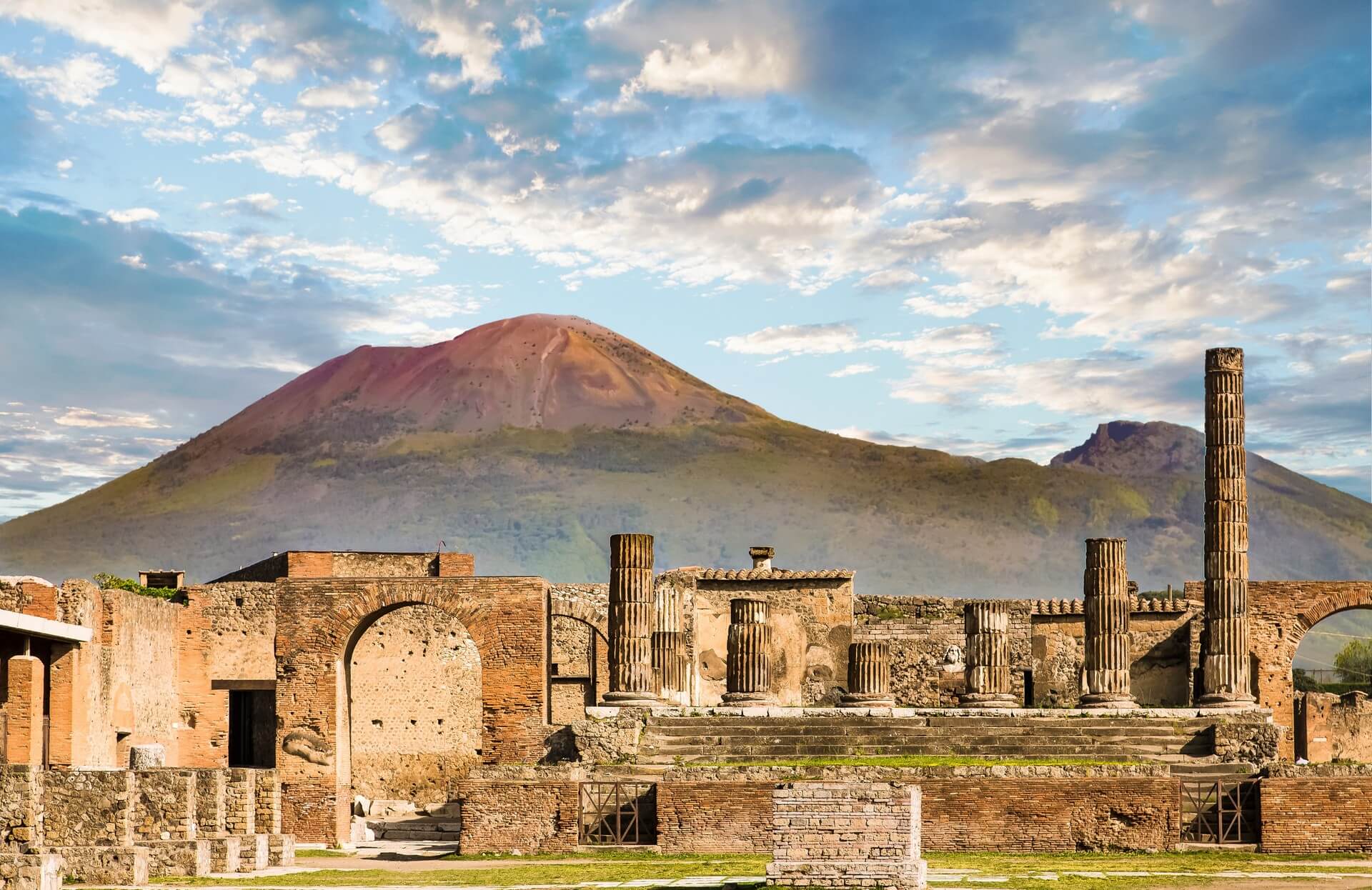On a day between late summer and early autumn, the mountain that overlooked the bustling Roman city of Pompeii exploded. It was 79 A.D., on a day that we still have not identified exactly, despite the direct testimony of Pliny the Younger who recounted the eruption.
All we know is that unexpectedly Vesuvius erupted and radically changed morphology, wiping out the existence of the cities of Pompeii, Herculaneum, Stabia and the present-day Torre Annunziata and Torre del Greco. It scattered lapilli and ash everywhere as winds carried them across Campania.
Today Pompeii is one of the most visited places in Campania. Due to both the presence of the archaeological excavations and the presence of the Shrine of the Rosary, visitors and pilgrims flock to the city throughout the year. Continue reading this article to learn more about what to see in Pompeii.
What to see in Pompeii: the archaeological excavations
If you are traveling to Naples or perhaps to the Amalfi Coast, devote a day to visiting the Archaeological Park of Pompeii. The experience is truly unrepeatable: ancient Pompeii is still being discovered because excavations are still in progress. Visiting Pompeii is best done in mild weather. But if you decide to come to Campania in the middle of summer, then equip yourself with water, hat, comfortable shoes and sunscreen. We recommend that you enjoy the experience in the most relaxed and practical way possible by booking a private guided tour of Pompeii

Exploring the site takes you a minimum of 2 up to a maximum of 5 hours. It depends on the itinerary you plan to follow. As it is also explained on the official website, there are three recommended itineraries, but there are two variations of the first one. So in fact there are 4 routes to follow to choose from.
What will you see. All the buildings that formed one of the most active and prosperous cities of the Roman Empire: private domus; artisan and "street food" stores; public rooms, gymnasiums, and religious temples; and finally, the places of pleasure: the baths and the lupanariums. Some milestones are:
- the Amphitheater;
- the Big and Small Theater;
- the Forum and the Macellum; the Garden of the Fugitives;
- the House of Sallust;
- The House of the Faun;
- Menander's House;
- the Cryptoporticus House;
- the suburban Villa of the Mysteries.
It is somewhat up to you to choose where to be guided to visit what interests you most.
The Shrine of the Holy Rosary of Pompeii
As we said, Pompeii is also famous as a pilgrimage destination to the shrine. The Shrine of the Holy Rosary of Pompeii was built starting in 1876. Founder of the religious building was Bartolo Longo, supported by his wife, Countess Marianna Farnararo De Fusco.

It is a large neoclassical architectural complex, built on the model of Roman basilicas. On its facade stands the statue of the Blessed Virgin, made of Carrara marble. The bell tower is as high as 80 meters, and 8 bells have been placed on its top. If you like, you can ride an elevator to the top and enjoy the view.
Inside, the eye undoubtedly falls on the frescoes on the ceiling of the nave and dome. But especially majestic are theAltar of the Virgin and the Throne, as well as theOrgan , which was recently restored.
As a whole, the shrine also includes the Crypt, numerous side chapels, and the Shrine Museum. And let us remember that if a basilica is a shrine, it is because there is a special devotion of the faithful. Symbolic of that devotion is the painting of Our Lady of the Rosary, which depicts Mary with baby Jesus in her arms, adored by St. Dominic and St. Catherine of Siena.
The shrine of Pompeii has also been a major pontifical basilica since 1901 and, in fact, Pope John Paul II, Benedict XVI and Pope Francis have visited it, as well as personalities elevated to the rank of saints by the Catholic Church, such as Pius of Pietrelcina and Giuseppe Moscati.
Since the Marian month par excellence is the month of May, this is the time of year when the activity of the faithful intensifies, finding its climax on May 8, when the supplication, composed by Bartolo Longo himself, is recited in the presence of the painting depicting Our Lady.
Will you visit the archaeological excavations? And are you curious to go to the sanctuary as well?


